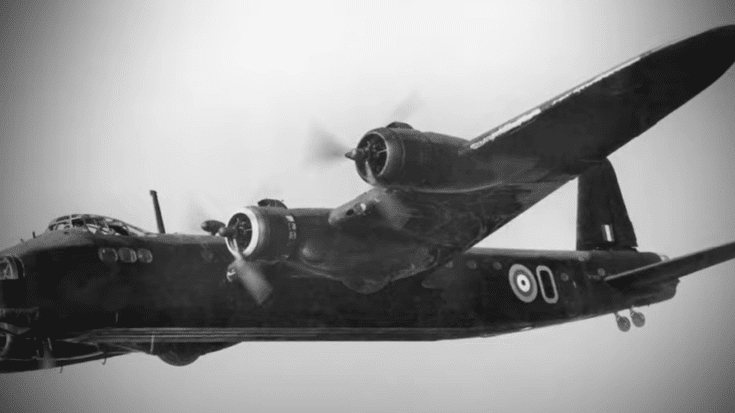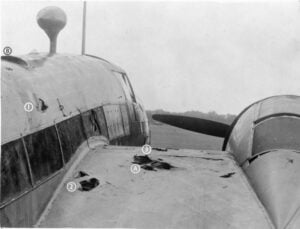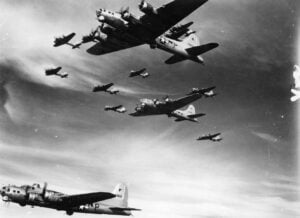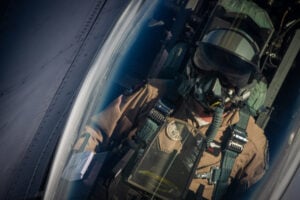This WWII Heavy Bomber Failed Its Mission—And Found a New Purpose

Historical Digs / YouTube
A Promising Start with Hidden Flaws
In 1941, Britain’s Bomber Command was in urgent need of a heavy bomber to strike back against Germany. The Short Stirling was introduced with high expectations. It featured four Hercules engines and a wingspan designed for power, allowing it to carry up to 14,000 pounds of bombs. On paper, it seemed like a formidable weapon. In reality, serious design flaws made it ineffective in its intended role.
The origins of these problems dated back to 1936, when the British Air Ministry issued requirements for a new long-range bomber. The Short Brothers company, known for its Sunderland flying boats, developed the Stirling. However, there was an immediate problem: the RAF’s existing hangars were too small to accommodate the bomber. Instead of constructing larger hangars, which was deemed too costly, officials ordered the company to shorten the Stirling’s wings. This compromise led to severe performance issues that would plague the aircraft throughout the war.

A Bomber That Couldn’t Bomb
One of the most significant flaws of the Stirling was its bomb bay, which was limited to just 14 feet. This restriction meant it could not carry the RAF’s new 12,000-pound Tallboy bombs, which were essential for targeting heavily fortified enemy positions. While the Lancaster and Halifax bombers could transport these massive payloads, the Stirling was left behind. A 1942 memo from Bomber Command lamented that the aircraft’s bomb load was too small to be of real strategic value.
Beyond its payload limitations, the Stirling had another major weakness. Its shortened wings prevented it from reaching high altitudes, leaving it vulnerable to German anti-aircraft fire. Pilots described flying it through enemy defenses as navigating a hailstorm of flak. Despite these issues, many crew members appreciated its handling. Unlike the Lancaster, which had a heavier and slower response, the Stirling was known for its agility. Pilots recalled being able to maneuver it almost like a fighter plane, an unusual trait for a heavy bomber.

The Shift to Other Missions
By 1943, Bomber Command could no longer justify using the Stirling in frontline bombing missions. Instead, it was reassigned to “gardening” missions, a term used for mining enemy harbors. These operations were dangerous and unpopular among crews, as they required flying low over heavily defended waters. However, this reassignment revealed an unexpected strength: the Stirling’s rugged construction allowed it to absorb severe damage and still return to base. Some aircraft came back with hundreds of bullet holes, missing sections of their tails, and engines leaking oil, yet they remained airworthy.
As the war continued, the Stirling found a new role outside of bombing. Its large fuselage made it an excellent candidate for transport missions. With its bomb racks removed and modifications made for troop carrying, the aircraft became essential for airborne operations. It would soon play a critical role in the most significant military operation of the war.

A Key Player in D-Day
In preparation for the D-Day invasion, Allied forces needed a way to transport thousands of paratroopers and gliders behind enemy lines. The Stirling was one of the only aircraft capable of towing the massive Horsa gliders, each carrying troops and equipment for the invasion. On the night of June 5, 1944, over 100 Stirlings took off, each pulling a glider toward Normandy. Pilots recalled releasing the gliders in near-total darkness, hoping their cargo would reach the drop zones safely.
The Stirling’s role did not end there. During Operation Market Garden, it was used as a flying ambulance, carrying wounded soldiers out of the battlefield. Medics installed stretchers inside its fuselage, turning it into an airborne hospital. One nurse described a mission where they evacuated 22 wounded men despite a gaping hole in the wing. The Stirling continued to prove itself in unexpected ways, transporting supplies, dropping resistance fighters behind enemy lines, and even delivering unconventional cargo like bottles of whiskey for Allied troops in France.

The Stirling’s Legacy
By late 1944, the Stirling was involved in nearly every major operation, except for the one it was originally designed for—strategic bombing. Instead, it excelled in transport, airborne assault, and special operations. It laid smokescreens for amphibious landings, jammed enemy radar with chaff, and even participated in tests for early ejection seats. Though its initial mission was a failure, the aircraft found new life by adapting to the needs of war.
Despite being overshadowed by the Lancaster and Halifax in history books, the Stirling played a vital role in the later stages of the war. Its ability to endure damage, transport troops, and support airborne operations ensured that it remained indispensable. Though it began as an unsuccessful bomber, it ended the war as one of the most versatile aircraft in the RAF’s arsenal.



















